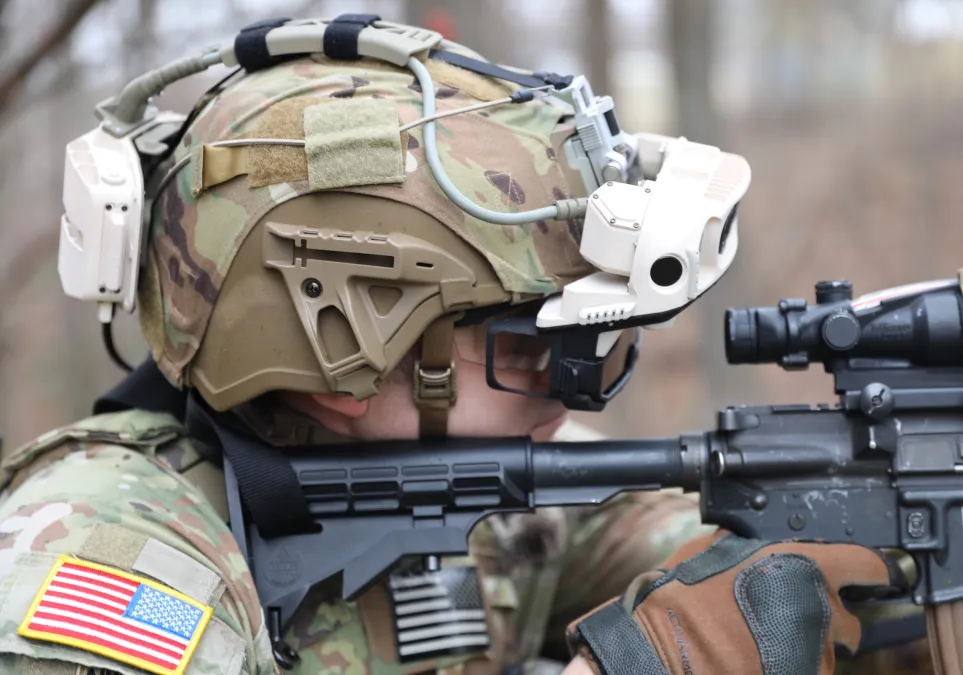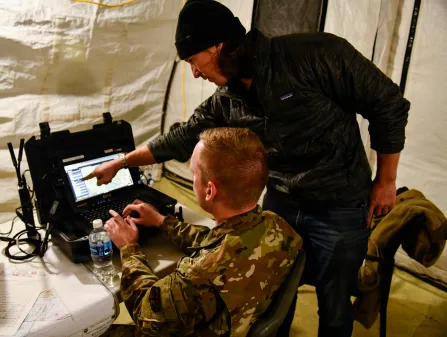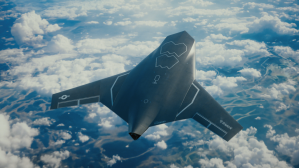Anduril integrates AI tech into Army IVAS headsets

Microsoft is teaming up with defense technology company Anduril to boost the capabilities of its Integrated Visual Augmentation System as Army officials ponder the future of the program.
IVAS has been one of the Army’s highest-priority modernization initiatives, with Microsoft as the prime contractor. The system — which includes ruggedized headgear and software with night-vision, thermal sensing and augmented reality capabilities, among others — was inspired by the company’s HoloLens 2 device. The service aims to use the equipment for both training and battlefield operations for dismounted troops. The program could be worth as much as $21.9 billion if it comes to full fruition.
On Thursday, Anduril announced that its Lattice solution has been incorporated into the system. Lattice can be employed as a situational awareness tool that uses capabilities such as AI, computer vision, edge computing and sensor fusion to detect, track and classify objects of interest for users, according to a product description.
“Soldiers wearing Lattice-enabled IVAS headsets are rapidly warned of incoming autonomously-detected airborne threats, enhancing survivability in complex, contested environments. The integration of Anduril’s systems, alongside third-party technologies, is set to propel the IVAS mission capabilities forward,” Anduril officials stated in a press release.
The Army has been rolling out different variants of IVAS to soldiers for experimentation and to get their feedback on the technology. The latest iteration developed by Microsoft is known as IVAS 1.2.
An Anduril spokesperson told DefenseScoop that that Lattice has been integrated with IVAS 1.1 and IVAS 1.2 systems.
“We are proud of the collaborative progress on this effort,” the spokesperson said.
In a statement, company co-founder Palmer Luckey said the project is his “top priority” at the organization, which is also working on other high-profile Pentagon initiatives such as the Air Force’s collaborative combat aircraft program and Replicator.
“It’s one of the Army’s most critical programs being fielded in the near future, with the goal of getting the right data to the right people at the right time,” he said about IVAS. “This is Anduril’s bread and butter, and we’ve been building the backbone for this for years.”
Before co-founding Anduril, Luckey launched Oculus VR, the startup known for its commercial virtual reality headset which went on to be acquired by Facebook.
Microsoft had already been making enhancements to IVAS equipment and software, some of which were prompted by soldier complaints about early versions.
“IVAS is more than the sum of its parts. Through integration across existing and new software and sensors, IVAS brings a full picture of the battlefield to every soldier, enabling safer and more effective operations. Our collaboration with Anduril to integrate their suite of critical sensors, along with their groundbreaking Lattice system into IVAS, demonstrates the transformative capability of this fighting goggle and will allow us to further expand the impact IVAS will have for every U.S. soldier,” Robin Seiler, Microsoft’s corporate vice president of mixed reality, said in a statement.
The Army requested $255 million from Congress for fiscal 2025 to buy more IVAS systems — including 3,162 IVAS 1.2 heads-up-display platforms — as well as $98 million for research, development, test and evaluation related to the technology.
The service’s R&D plans for this year included developing software for IVAS “that enables soldiers to intuitively relay reconnaissance intent to a team of autonomous sensors and quickly interpret feedback from the systems and make targeting decisions,” according to budget justification documents. For 2025, it aims to make improvements related to the heads-up-display design, thermal and low-light sensors, IVAS extensibility, form factor, reliability, reducing weight, and developing AI data integration and applications.
The plan was to transition IVAS to a major capability acquisition pathway no later than October 2025.
However, Army acquisition chief Doug Bush recently said the service hasn’t decided whether Microsoft will remain the prime contractor for the program as officials consider a potential next stage of the modernization effort, which some have dubbed “IVAS Next.”
“Haven’t determined that yet,” Bush told reporters during a roundtable earlier this month. “We are … working with [IVAS] 1.2 going through a series of evaluations to gain knowledge about whether it is good enough to go to production. So that’s the purpose of doing all that testing is to gain confidence and go, ‘Yes, this is ready to go to production and field to operational units.’ So that’s what we’re doing right now. The potential, though, for future competition is there because, you know, I think there’s so many companies in this space and there’s so much dynamic tech here, that we certainly need to preserve the option of having a competition in the future if other people come with good solutions. … The decision hasn’t been made yet to, for sure, go that route, but we’re setting conditions to where, if we decide to, we can.”
“In the meantime, Microsoft is doing a good job with its current contract. The evaluations are going broadly pretty well. But … we’re working with prototypes, we’re learning the good and the bad. So we’re still hoping to get there. I think the broad goal of bringing this kind of wearable tech in a military form factor to infantry units to make them more effective, is something everyone in the Army, almost everyone, agrees on. How do we get there is the issue — is this exact version of IVAS that version, or do we need another spin of development?” he said.
DefenseScoop asked Anduril officials if the company was considering competing as a prime contractor for IVAS Next.
“We’re closely following the developments around IVAS-next and are confident that the combined strengths of Anduril and Microsoft can deliver a solution that enhances both soldier survivability and lethality. We will continue to monitor IVAS-next, and as always, we are committed to positioning ourselves to do what’s best for the warfighter, staying true to our mission of delivering the most effective solutions,” an Anduril spokesperson said.






